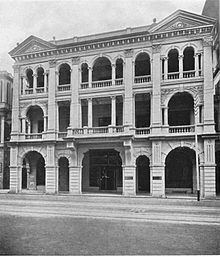| | |
|
part nationalized and part acquired In Indonesia Bank Umum Negara, the remainder AMRO Bank Commercial banking and Retail banking |
The Nationale Handelsbank was a Dutch bank that was established to financing trade between the Netherlands and the Dutch East Indies. After operating independently for nearly a hundred years, the parts in Indonesia, were nationalized by the Indonesian government and the remainder was acquired by the Rotterdamsche Bank in 1960 and would be absorbed into AMRO Bank.
(Text) CC BY-SA

